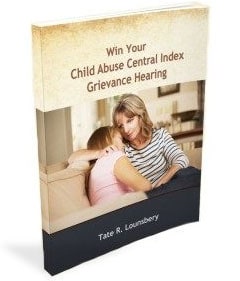Long-Term Consequences of Child Neglect
Building your case after being accused of child neglect means knowing what you’re up against. These aren’t allegations to be taken lightly, and you must do everything in your power to defend your rights. After all, you can’t afford to stay on the Child Abuse Central Index, given its damage to your overall quality of life and reputation.
While many might think that “neglect” doesn’t hold the same weight as other forms of child abuse, most reliable evidence proves otherwise.
These long-term consequences are why those accused of severe neglect end up on the CACI.
Examining Child NeglectIn layman’s terms, child neglect is depriving a child of needs, appropriate to their age, to the point that it could realistically result in physical or psychological harm. The people subject to these charges are parents or any other caregiver.
Here are the kinds of actions or inaction that are tied with neglect:
- Abandonment
- Failure to provide the proper supervision
- Not giving them the required physical, emotional or psychological support
- Failing to provide the necessary education, nourishment, shelter, medical care, or clothing
Often, this pattern of behavior has been noticed by other people close to the affected child. Teachers are commonly individuals who see prominent signs such as poor hygiene, too many absences, an absence of weight gain, and substandard medical care.
The United States Department of Health and Human Services states that 7 children per 1,000 were reported victims of neglect.
This number proves to be the highest form of child maltreatment in the US. It’s a statistic coming from an article called “Do the Long-Term Consequences of Neglect Differ for Children of Different Races and Ethnic Backgrounds?” (Cathy Spatz Widom, Sally Czaja, Helen W. Wilson, Maureen Allwood and Preeti Chauhan, “Do the Long-Term Consequences of Neglect Differ for Children of Different Races and Ethnic Backgrounds?,” Child Maltreatment 2013 18:42)
In fact, neglect accounts for more than 60% of cases reported to Child Protective Services, according to that same article.
Long-Term Physical Consequences of NeglectBefore getting into the drastic long-term psychological impact of neglect, it’s important to discuss some of the damage it can have on future physical health. Research links these following types of ill health to such maltreatment:
- Diabetes
- Lung disease
- Malnutrition
- Vision problems
- Functional limitations (i.e., being limited in activities)
- Heart attack
- Arthritis
- Back problems
- High blood pressure
- Brain damage
There are other health complications that could stem from neglect, such as bowel disorders, but this list paints enough of a picture.
How Does Child Neglect Impact the Brain Long-Term?The same research cited above also discusses how child neglect can prevent the brain from fully developing.
Emotions are controlled through the amygdala, and there’s reason to believe neglect and maltreatment hinders this function as children get older. Also, over time, the orbitofrontal cortex is damaged, which adversely impacts decision-making.
Then there’s the negative influence this form of abuse does to motor behavior and executive function, stemming from harm to the cerebellum. Lastly, there’s the damage it does to higher cognitive abilities through harm caused to the corpus callosum.
The Long-Term Damage of Neglect Through the Lens of RaceThe article “Do the Long-Term Consequences of Neglect Differ for Children of Different Races and Ethnic Backgrounds?” was brought up earlier. Delving deeper into the findings shows some variance in the long-term consequences of child neglect, depending on ethnicity. However, that doesn’t make the impact any less severe for different races.
Here’s a brief breakdown of these differences:
- White children displayed vast mental health consequences.
- Black children experienced anxiety and dysthymia.
- Hispanic children were more susceptible to alcohol problems.
While there may be differences in how races react to childhood neglect, the impact is equally harmful. It creates a chain reaction of adverse outcomes, no matter the child.
What’s also worth noting is the same research shows an increase of violence in both black and white victims of childhood neglect. These findings suggest that neglect of a child by a caregiver leads to further societal problems.
Neglect Lasts a LifetimeThe legal system comes down severely on all forms of child maltreatment, and neglect is no different. When children experience this kind of trauma, it has a long-term impact that affects them physically, mentally, and emotionally.
The information presented here should give you an idea why Child Protective Services agency take neglect allegations seriously. Anyone a CPS social worker puts on the CACI due to neglect allegations is a person the social worker thinks is contributing to all the above problems in our society. Now you see what you’re up against when you face these kinds of allegations.
If you’ve been put on the CACI on the grounds of a substantiated allegation of severe neglect of a child, and the allegation against you is false, you deserve to be fairly treated and vigorously defended.
 Lounsbery Law Office, PC Home
Lounsbery Law Office, PC Home
